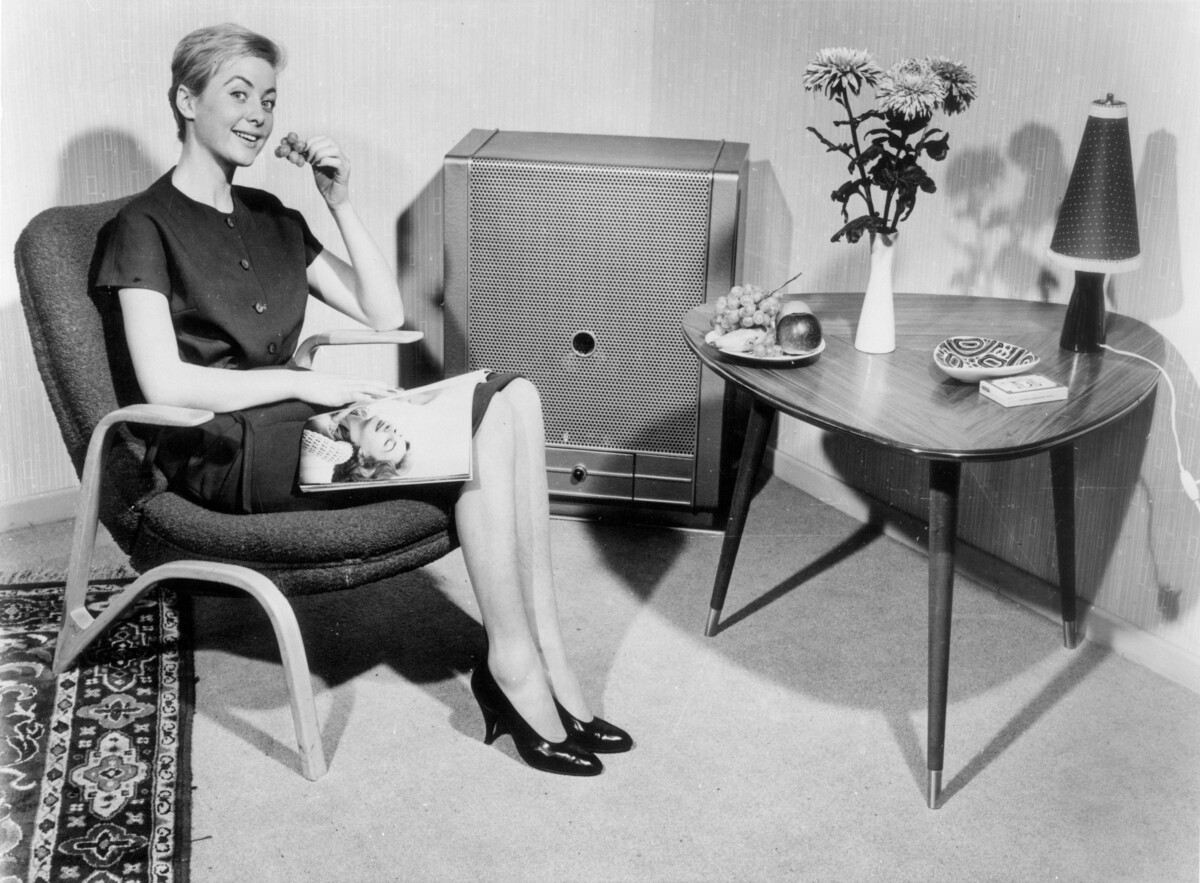Source

Source: Photo: Germin [Gerd Mingram].
bpk-Bildagentur, image
number 30014818. For rights inquiries, please contact Art Resource at
requests@artres.com (North America) or bpk-Bildagentur at
kontakt@bpk-bildagentur.de (for all other countries).
In the 1950s, West Germany experienced an impressive economic upswing. The “economic miracle” was characterized by income growth across class lines and a plentiful supply of consumer goods. As a result, changes emerged in the domestic sphere. Modern gas heating replaced labor intensive coal- and wood-burning stoves. Furniture was spare and functional – the so-called kidney table became a symbol of home décor in the 1950s. (Its name derived from its asymmetrical organic form.) Likewise, the simple armchair, the un-embellished flower vase, and the small table lamp represented a departure from the style of the pre-war years. Showcasing these modern furnishings is a young woman with a fashionable short haircut who is reading an illustrated magazine.

Source: Photo: Germin [Gerd Mingram].
bpk-Bildagentur, image
number 30014818. For rights inquiries, please contact Art Resource at
requests@artres.com (North America) or bpk-Bildagentur at
kontakt@bpk-bildagentur.de (for all other countries).
© bpk / Germin [Gerd Mingram]